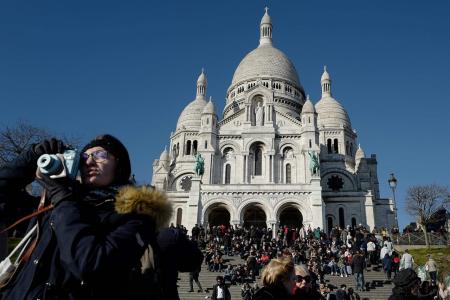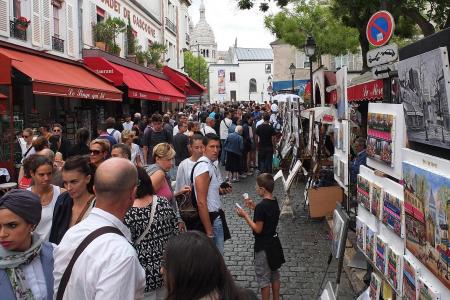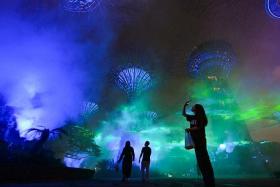Mass tourism sparks battle for Montmartre's soul
Iconic district, home to artists and the Sacre-Coeur basilica in the heart of Paris, faces spiralling rents thanks to influx of tourists
Inside a darkened room once frequented by Picasso and Modigliani when they were struggling artists, tourists from Russia, Canada and Australia listen to old French songs.
This is the Lapin Agile,home to the last cabaret in Montmartre, an iconic neighbourhood perched on a Paris hilltop.
But in recent decades, this village-like district of steep hills and sweeping views has been transformed by mass tourism.
"It's the last of the traditional cabarets," said owner Yves Mathieu, grumbling about the ubiquitous souvenir shops selling Paris mugs and Eiffel tower key rings clogging the streets.
"I'm 90 years old but I'm not giving up," he said.
The cabaret's walls are decorated with copies of works by Pablo Picasso and Henri de Toulouse-Lautrec, artists whose original paintings once helped pay for their meals there.
But now, the top of the hill - called la Butte - once a 19th-century mecca for artists, risks being swamped by tourism.
Some 12 million tourists tramp up its slopes every year to admire the white-stone Sacre-Coeur basilica, take in the panoramic views of Paris, or visit the most famous of the French capital's vineyards.
But the Place du Tertre, a square at the top, is threatening to become a kind of Disneyland, said Mr Alain Coquard, president of the self-proclaimed Republic of Montmartre, an association set up in 1921 to oppose urban development.
Spiralling rents have driven out ordinary shopkeepers, said Mr Frederic Loup, who owns a pharmacy serving local residents since 1927. Today, it is the only local shop left.
"The baker left. The butcher also left. The problem is the rents, which only the souvenir shops can afford," he said.
Favoured by poor artists at the end of the 19th century for cheap lodgings, Montmartre's property prices has sky-rocketed over the past three decades.
It won further acclaim when its picturesque streets hit the big screen in 1991 with Amelie, a light-hearted romantic comedy which painted a rosy, idealised version of the neighbourhood.
Thirty years ago, an apartment cost around 1,500 euros (S$2,380) per square metre .
Today, buyers fork out 10,000, even 20,000 euros per square metre, said Mr Brice Moyse who heads an estate agency which specialises in Montmartre properties.
With such prices, there no chance that a struggling writer or artist couldfollowthe footsteps of Pissarro or Renoir by moving there.
Artists who do work there tend to make a living by rushing off pencil sketches of tourists or elaborate paintings of city landscapes, but they too are under threat - much of the artwork in local tourist shops is made in China and sold at bargain prices.
"They are forgers, parasites!" fumes street artist Midani M'Barki, referring to the Chinese competition.
Mr M'Barki, who heads the Paris-Montmartre artists' association, also rails against local cafes and restaurants taking over the pavements, squeezing out painters.
Street artists can ply their trade on the pavements, but the space taken by restaurant tables and chairs has expanded.
Said Mr M'Barki, who has worked in the area since 1970: "We should be given half the space. If we don't get it, we'll leave. And without us, there won't be any Montmartre." - AFP
Get The New Paper on your phone with the free TNP app. Download from the Apple App Store or Google Play Store now



